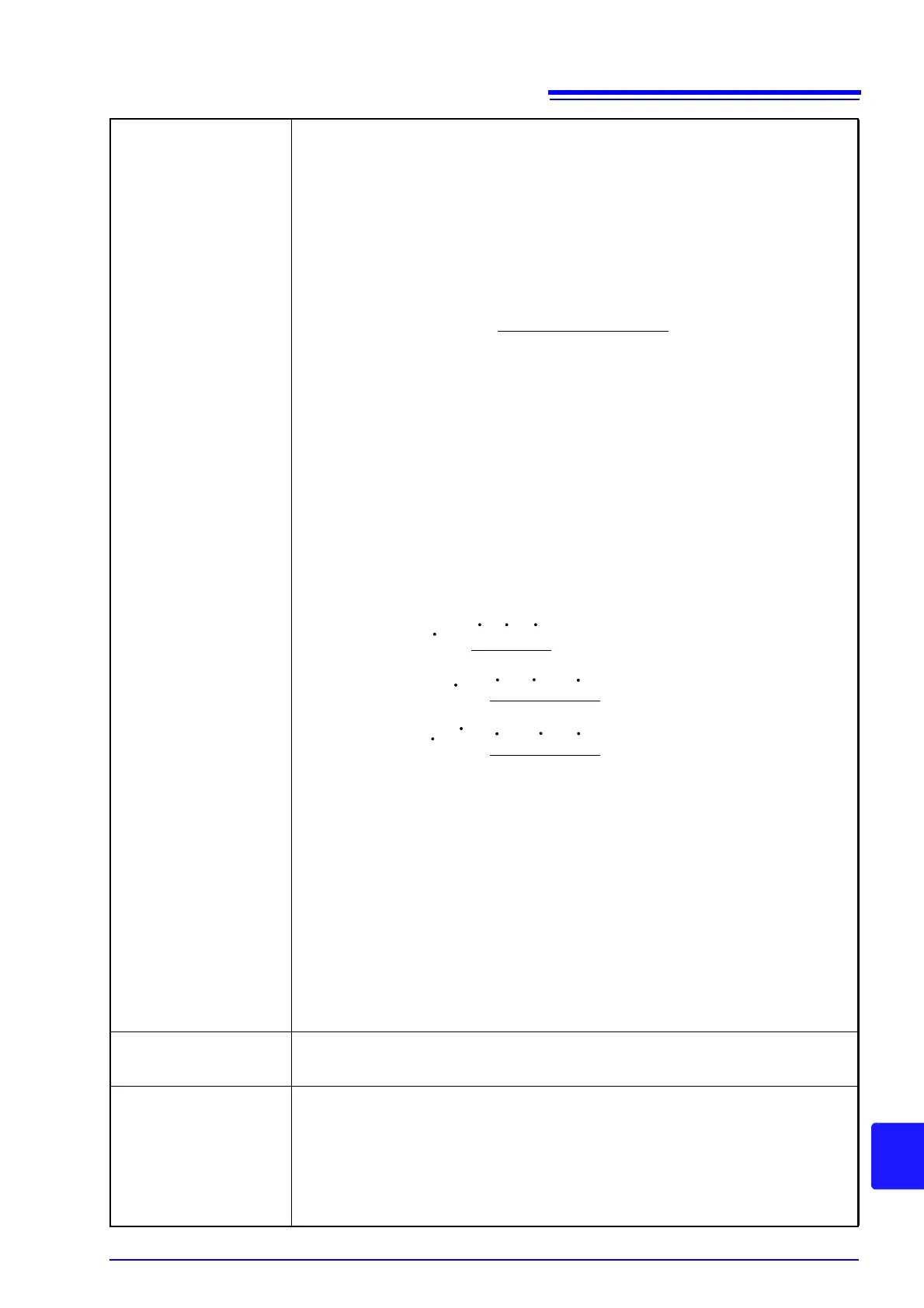Appendix 7 Terminology
A
29
Appendix
Unbalance factor
Unbalanced (symmetrical) 3-phase voltage (current)
Three-phase AC voltage (current) with equal voltage and current magnitude for each
phase and 120 phase separation.
Unbalanced (asymmetrical) 3-phase voltage (current)
Three-phase AC voltage (current) with equal voltage and current magnitude for each
phase and 120
° phase separation.
Though all of the following descriptions refer to voltage, they apply to current as well.
Degree of unbalance in threephase alternating voltage
Normally described as the voltage unbalance factor, which is the ratio of negative-phase
voltage to positive-phase voltage
Zero-phase/positive-phase/negative-phase voltage
The concept of a zero-phase-sequence/positive-phase-sequence/negative-
phase- sequence component in a three-phase alternating circuit applies the method of
symmetrical coordinates (a method in which a circuit is treated so as to be divided into
symmetrical components of a zero phase, positive phase, and negative phase).
• Zero-phase-sequence component: Voltage that is equal in each phase. Described as
V
0
. (Subscript 0: Zero-phase-sequence component)
• Positive-phase-sequence component: Symmetrical three-phase voltage in which the value
for each phase is equal, and each of the phases is delayed by 120 degrees in the phase
sequence a->b->c. Described as V
1
.(Subscript 1: Positive-phase-sequence component)
• Negative-phase-sequence component: Symmetrical three-phase voltage in which the value
for each phase is equal, and each of the phases is delayed by 120 degrees in the phase
sequence a->c->b. Described as V
2
. (Subscript 2: Negative-phase-sequence component)
If Va, Vb, and Vc are given as the three-phase alternating voltage, the zero-phase voltage,
positive-phase voltage, and negative voltage are formulated as shown below.
a is referred to as the “vector operator.” It is a vector with a magnitude of 1 and a phase angle of
120 degrees. Therefore, the phase angle is advanced by 120 degrees if multiplied by a, and by
240 degrees if multiplied by a
2
. If the three-phase alternating voltage is balanced, the zero-
phase voltage and negative-phase voltage are 0, and only positive phase voltage, which is
equal to the effective value of the three-phase alternating voltage, is described.
Unbalance factor of three-phase current
Used in applications such as the verification of power supplied to electrical equipment pow-
ered by a 3-phase induction motor.
The current unbalance factor is several times larger than the voltage unbalance factor. The less
a three-phase induction motor slips, the greater the difference between these two factors. Volt-
age unbalance causes such phenomena as current unbalance, an increase in temperature, an
increase in input, a decline in efficiency, and an increase in vibration and noise.
Uunb must not exceed 2%, and Iunb must be 10% or less. In a 3P4W system with an
unbalanced load, the Uunb0 and Inub0 components indicate the current that flows to the N
(neutral) line.
Flag
A marker used to distinguish unreliable measured values occurring due to disturbances
such as dips, swells, and interruptions. Flags are recorded as part of the TIMEPLOT data
status information. The concept is defined by the IEC61000-4-30 standard.
Flicker
A disturbance caused by a voltage drop resulting when equipment with a large load starts
up or when a large current flows under a temporary high-load state. For lighting loads,
flicker primarily manifests itself as blinking. Electric-discharge lamps such as fluorescent
and mercury-vapor lights are particularly prone to the effects of flicker.
When temporary dimming of lights due to voltage drops occurs frequently, it produces a flickering
effect (caused by repeated dimming) that produces an extremely unpleasant visual sensation.
Measurement methods can be broadly divided into IEC flicker and XXV10 flicker. In Japan,
the V10 method is most frequently used.
Voltage unbalance factor =
Negative-phase voltage
Positive-phase voltage
x 100 [%]
Zero-phase voltage V
0
=
Va+Vb+Vc
3
Positive-phase voltage V
1
=
Va+aVb+a
2
Vc
3
Negative-phase voltage V
2
=
Va+a
2
Vb+aVc
3

